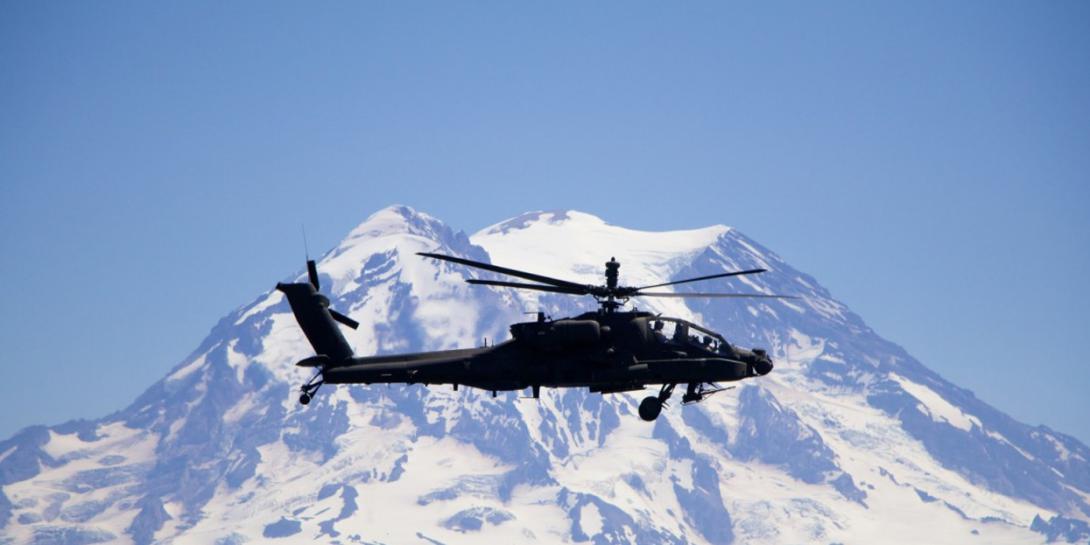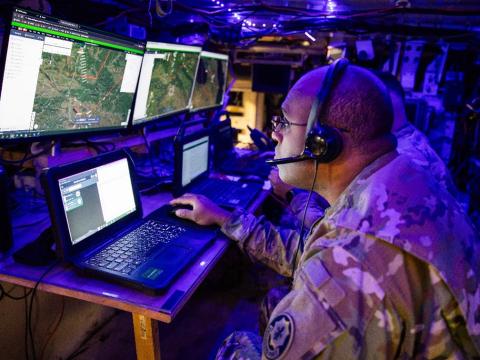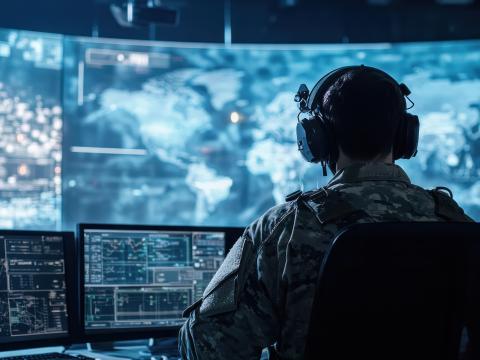Open Architecture Systems Will Be the Contract Discriminator
The U.S. Army has pursued the development of open architecture system standards for several years and now is increasingly fielding such systems across its programs, including amongst its aviation and communications capabilities. The service, which worked with tri-service partners, the Navy and Air Force, will benefit from the systems being on the battlefield, as they cut costs, improve software reuse and portability, bring greater ease of use, and increase size, weight and power, or SWAP, savings, said Brig. Gen. Robert Collins, U.S. Army Program Executive Officer for Command, Control, Communications-Tactical (PEO C3T).
Through working groups that coordinated and developed the standards needed to apply open architecture to military systems, the three services created: the Future Airborne Capability Environment, or FACE; the Sensor Open Systems Architecture, or SOSA; Hardware Open Systems Technologies (HOST); Modular Open Systems Architecture (MOSA); and CMOSS, the Command, Control, Communications, Computers, Intelligence, Surveillance and Reconnaissance (C4ISR) / Electronic Warfare (EW) Module Open Suite of Standards.
Gen. Collins, along with Joe Carter, acting systems engineering lead, Program Executive Office, Aviation, and elected chair, FACE Steering Committee, spoke at last week’s Open Group FACE and SOSA Consortia Technical Interchange Meeting, held virtually.
“I'll tell you here in the PEO C3T portfolio, we are really pushing hard on CMOSS,” Gen. Collins said. “In order to maintain our readiness for the range of military operations and for what we identify as large-scale ground combat operations, we are implementing a multidomain operational force. That change in the operational focus, on anti-access area denial, given our near-peer threats, it requires a change from our traditional processes and requires open and integrated solutions. It is really open systems architecture that is going to allow us to keep pace not only with technology but the advancement of threats.”
For Carter, who oversees PEO Aviation’s open system architecture efforts, including FACE and MOSA, and supports common operating environment efforts under the assistant secretary of the Army for Acquisition, Logistics, and Technology, the cost savings are essential. “Every PM [program manager] that you go to, and it doesn’t matter which service you're in, I bet they all say the same thing,” he noted. “They have too many requirements and too few dollars.”
And program managers have a long list of reasons to upgrade equipment, including to add new warfighter functionality, respond to headquarters or congressional mandates, address obsolescence issues, or technology insertions, Carter explained. “So, we…. show them with software reuse what we could do and how their funding could actually go further,” he emphasized. “Software reuse gives them a lot of opportunities to expand or stretch funding.”
PEO Aviation is in the process of standing up a MOSA transformation office and is examining the related open architecture language to be included in contracts. “And we are looking across our portfolio and trying to see the areas where we could apply MOSA implementation,” Carter added. “We are following that guidance from DOD, the tri-services and the Office of Secretary of Defense. MOSA as a whole will be a source selection discriminator for future contracts. It is coming.”
The effort to increase the use of open architecture systems dovetails nicely with the pursuit of digital engineering, Carter continues. “One of the things I've been tasked to do is to stand up the digital engineering environment that we are going to integrate within our PEO Aviation network that allows us to maintain models on our systems. We are creating an environment across our aviation system to allow this digital engineering environment and it's expanding rapidly.”
He stressed that the digital engineering environment will not only naturally include systems engineering, but also the financial aspects, contracting, logistics and facilities. “We are completely changing the way we do business right now,” Carter stated. “We are looking at utilizing a complete digital engineering approach.”
For the rest of the fiscal year, PEO C3T’s goal is to demonstrate a CMOSS mounted form factor (CMFF) integrated capability for mounted mission command applications, Gen. Collins shared. “The mounted form factor is really meeting and exceeding all of our expectations, from situational awareness to communications to position, navigation and timing (PNT),” he said. “From an operational capability, it is the ability to execute command and control on the move so commanders and leaders can engage in full spectrum operations. The mobile capability is allowing both technical and operational advancement. And we are going to support both air and ground specific platforms.”
The open architecture integrates mission command, maneuver and fires control systems into a single system. “Instead of a multitude of separate boxes, in the future we are going to allow those subsystems to be reused across the platform, which will be a significant combat multiplier,” the general explained.
With the CMOSS form factor, PEO C3T is advancing how it uses their tactical scalable MANET (TSM) waveform operating over L-band,” Gen. Collins shared. “And one of our stretch goals is to start incorporating SINCGARS [Single Channel Ground and Airborne Radio System] into that system from a card slot.” In addition, the PEO is working with the PNT program manager to build an open architecture PNT card to fit in the CMOSS chassis to distribute position navigation and timing capabilities, he said.
Warfighters will test both capabilities at two planned field tests, including one at the next Network Modernization Experiment (NetModX) to examine the TSM L-Band CMOSS CMFF. The second field test, which will be for the PNT card, will be at the PNT Assessment Exercise, or PNTAX, a risk reduction effort for projects, Gen Collins stated.
“With open architecture as the strategy, we will continue to stay aligned into the SOSA consortium along with our partners in the Army, Air force and also the Navy, and with that key participation, we can make sure we emerge out of the delivery side with joint implementation,” Gen. Collins said.





Comments